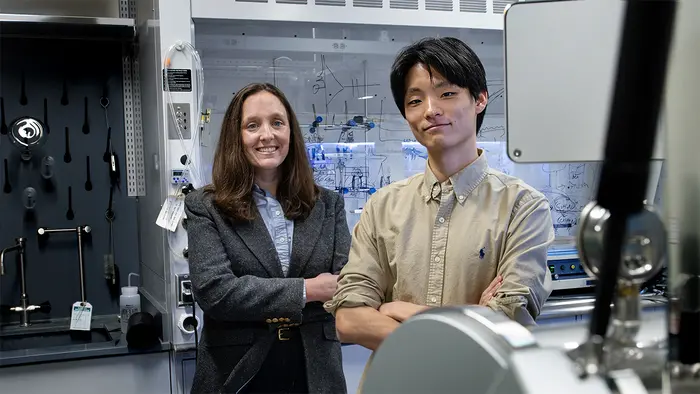From the electric vehicles we drive to the laptops we use, lithium-ion batteries have become the backbone of modern technology. While these batteries have revolutionized our world, their inherent limitations pose significant challenges as consumer demand for longer-lasting devices continues to rise. Researchers are thus turning their attention to groundbreaking alternatives, particularly the promising realm of anode-free solid-state batteries. Recent advancements in this field suggest we could soon harness a new generation of battery technology that transcends the current limitations associated with lithium-ion batteries.
Leading the charge in this ambitious endeavor is Kelsey Hatzell, an associate professor of mechanical and aerospace engineering at Princeton University, and part of the Andlinger Center for Energy and the Environment. Her research is pivotal in unlocking the next level of energy storage through an innovative battery design known as the anode-free solid-state battery. Hatzell’s work centers on elucidating how these advanced batteries operate under varying conditions, a focus that could catalyze significant improvements in their performance and manufacturability.
As demand for more efficient energy storage solutions soars, understanding the inner mechanics of solid-state batteries becomes increasingly essential. Unlike conventional lithium-ion batteries, which rely on liquid electrolytes, solid-state batteries utilize rigid solid electrolytes that open avenues for storing more energy in less physical space. This design not only promises increased efficiency and longer operating ranges but also significantly enhances durability compared to their lithium-ion counterparts.
Another defining characteristic of the batteries Hatzell investigates is their anode-free nature. By removing the traditional anode, which is usually made from lithium metal, these batteries streamline their manufacturing processes and reduce costs dramatically. The resultant design allows ions to flow directly from the positive cathode to a current collector, where they plate onto a metal layer during charging. The implications of this new architecture extend beyond simple battery efficiency; they could redefine cost structures and manufacturing scalability in energy storage.
Despite their alluring promise, anode-free solid-state batteries aren’t without their challenges. Hatzell’s research team recently identified crucial issues in maintaining effective contact between the solid electrolyte and the current collector – a fundamental requirement for optimal performance. Disruptions in this contact can lead to uneven ion deposition during charging and significant performance degradation upon discharge. Their findings indicate a delicate balance must be struck between pressure applied to the battery. Too little pressure results in poor contact, while excessive pressure could lead to fractures in the material, highlighting just how intricate the dynamics of these systems can be.
Recent studies conducted by Hatzell and her colleagues underscore these challenges. In one notable paper, published in the journal ACS Energy Letters, the researchers examined how external pressure impacts the interaction between the electrolyte and current collector. They discovered that insufficient pressure exacerbates irregularities on the surfaces of these components, while excessive pressure can lead to catastrophic failures. This duality underscores the inherent complexity in managing these batteries and frames the ongoing research needed to advance the technology.
In addressing potential solutions, Hatzell’s group has found innovative ways to facilitate better contact between the electrolyte and current collector. By developing specialized interlayers made from materials like carbon and silver nanoparticles, the team demonstrated that uniform ion transport is achievable, thus enhancing the overall battery performance. Such interlayers are critical because they bridge the gap between the rigid solid electrolyte and the current collector, ensuring that ions are deposited evenly, which is fundamental to maintaining battery integrity over multiple charging cycles.
The efficacy of these interlayers depends on the size and structure of the silver nanoparticles utilized within. Smaller particles tend to yield more stable and durable battery structures compared to their larger counterparts, which can lead to uneven plating and reduced battery life. This insight positions the research not just as an academic exercise but as a practical guide for future engineering paradigms in battery manufacturing.
The interest surrounding anode-free solid-state batteries is not solely academic. Significant industrial momentum is building behind these innovations, with major players in the battery manufacturing sector poised to disrupt the market. Countries such as China, Japan, and South Korea are actively planning to roll out these advanced battery technologies in the near future. Industry leaders like Samsung and Toyota have established ambitious production timelines, with plans to start mass-producing solid-state batteries by 2027 and 2030 respectively.
As we edge closer to transforming the theoretical benefits of solid-state batteries into market-ready applications, Hatzell emphasizes the importance of bridging the gap between lab-scale discoveries and real-world manufacturing capabilities. While the technology appears promising, the challenge remains: How can researchers and manufacturers collectively work to bring these next-generation batteries to market swiftly and efficiently?
In summary, the potential of anode-free solid-state batteries represents a transformative opportunity in energy storage. Researchers like Hatzell are leading a crucial effort to dissect the myriad factors influencing battery performance and developing solutions that could stabilize and enhance this innovative technology. As this field evolves, the hope remains that these breakthroughs will underpin the future of cleaner, more efficient energy storage solutions, paving the way for significant advancements in various sectors, including electric vehicles and personal electronics.
Training the next generation of engineers and scientists to tackle such complex challenges is essential. As multidisciplinary approaches gain prominence, collaboration among universities, industries, and government entities will be vital to realizing these ambitious technological aspirations. It is within this collaborative spirit that breakthroughs in battery technology can truly flourish, subsequently influencing global energy consumption and our path toward a more sustainable future.
Subject of Research: Anode-free solid-state batteries
Article Title: Filament-Induced Failure in Lithium-Reservoir-Free Solid-State Batteries
News Publication Date: February 22, 2025
Web References:
References:
Image Credits: Bumper DeJesus, Andlinger Center for Energy and the Environment
Keywords
Battery technology, solid-state batteries, anode-free batteries, energy storage, Kelsey Hatzell, lithium-ion limitations, electric vehicles, sustainable energy solutions.




